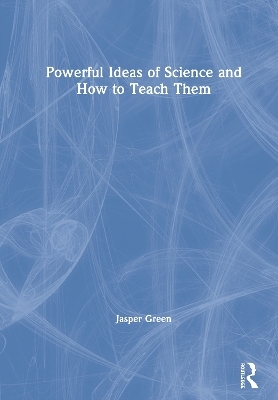
Powerful Ideas of Science and How to Teach Them
Routledge (Verlag)
978-0-367-18865-8 (ISBN)
A bullet dropped and a bullet fired from a gun will reach the ground at the same time. Plants get the majority of their mass from the air around them, not the soil beneath them. A smartphone is made from more elements than you. Every day, science teachers get the opportunity to blow students’ minds with counter-intuitive, crazy ideas like these. But getting students to understand and remember the science that explains these observations is complex. To help, this book explores how to plan and teach science lessons so that students and teachers are thinking about the right things – that is, the scientific ideas themselves. It introduces you to 13 powerful ideas of science that have the ability to transform how young people see themselves and the world around them.
Each chapter tells the story of one powerful idea and how to teach it alongside examples and non-examples from biology, chemistry and physics to show what great science teaching might look like and why. Drawing on evidence about how students learn from cognitive science and research from science education, the book takes you on a journey of how to plan and teach science lessons so students acquire scientific ideas in meaningful ways.
Emphasising the important relationship between curriculum, pedagogy and the subject itself, this exciting book will help you teach in a way that captivates and motivates students, allowing them to share in the delight and wonder of the explanatory power of science.
Jasper Green has worked in science education for over ten years as a teacher, head of science and most recently in initial teacher education. He is founder of thescienceteacher.co.uk and can be found on Twitter @sci_challenge.
Section 1: Aims for school science education: for who and for what?
1. Fallacies of science education
2. Powerful ideas of science
3. The nature of science and the rules of the game
Section 2: The science of learning science
4. Why learning science is hard but wonderful
5. How we learn: A cognitive science perspective
6. Why motivation matters
Section 3: Planning lessons with thinking in mind
7. Preparing to plan: Thinking about progression over time
8. Planning what to teach in the lesson
9. Planning how to teach it
Section 4: Planning and teaching the phases of instruction
10. Rewind and success for all: Retrieval practice
11. Trigger interest and activate prior knowledge
12. Introducing new ideas: Explanations and models
13. Practice ideas to build understanding: Worked examples and deliberate practice
14. Apply and integrate to make and break connections
Section 5: Responsive teaching
15. Making thinking visible so feedback can take place
Conclusion: Time to reflect Lesson planning templates
| Erscheinungsdatum | 22.07.2020 |
|---|---|
| Zusatzinfo | 15 Tables, black and white; 61 Line drawings, black and white; 2 Halftones, black and white; 63 Illustrations, black and white |
| Verlagsort | London |
| Sprache | englisch |
| Maße | 174 x 246 mm |
| Gewicht | 553 g |
| Themenwelt | Sozialwissenschaften ► Pädagogik ► Schulpädagogik / Sekundarstufe I+II |
| ISBN-10 | 0-367-18865-1 / 0367188651 |
| ISBN-13 | 978-0-367-18865-8 / 9780367188658 |
| Zustand | Neuware |
| Informationen gemäß Produktsicherheitsverordnung (GPSR) | |
| Haben Sie eine Frage zum Produkt? |
aus dem Bereich


